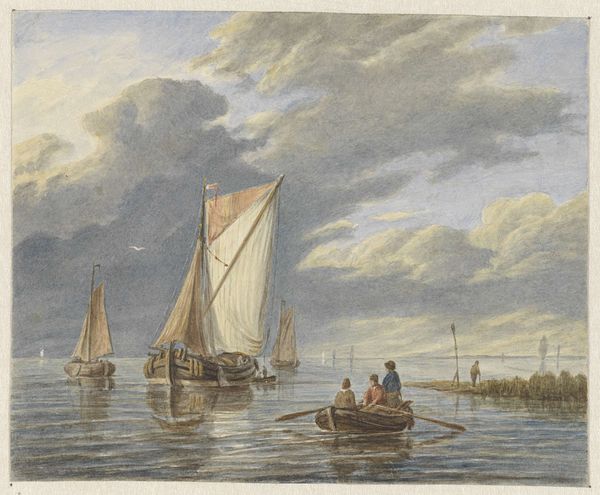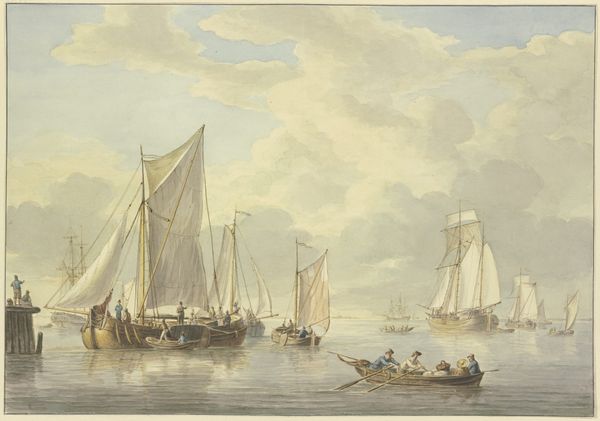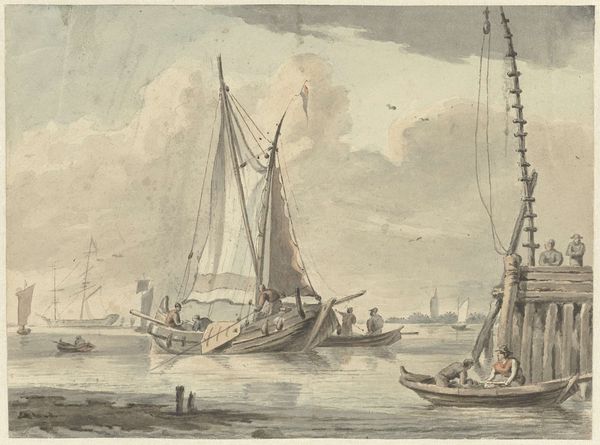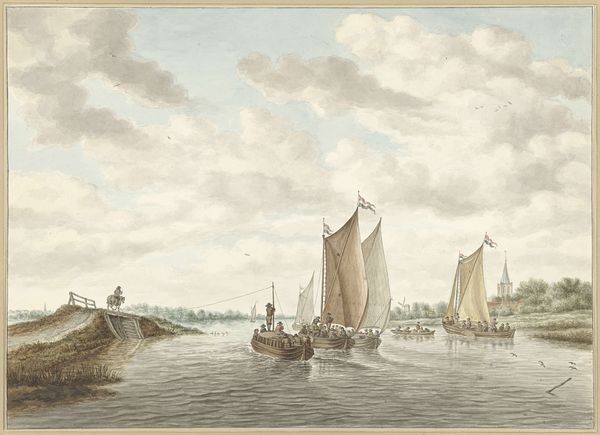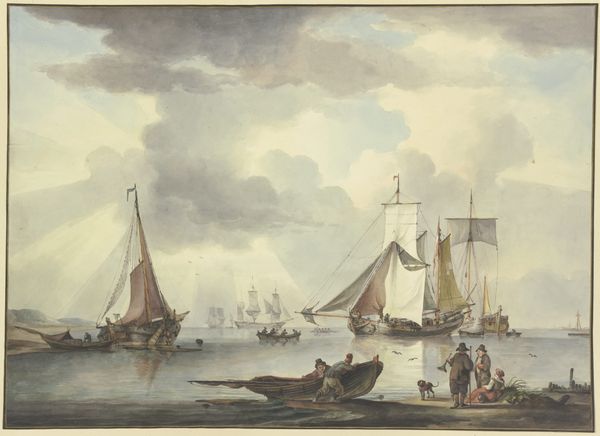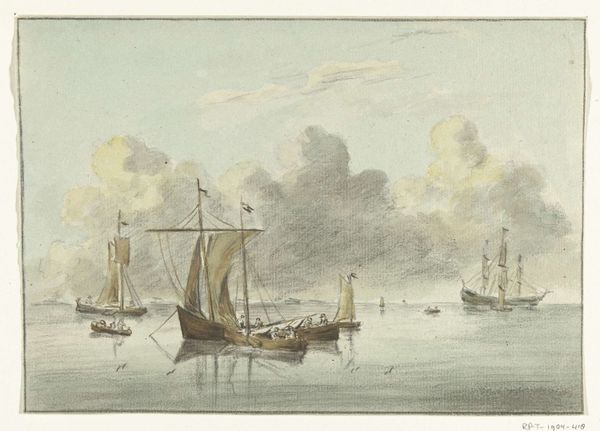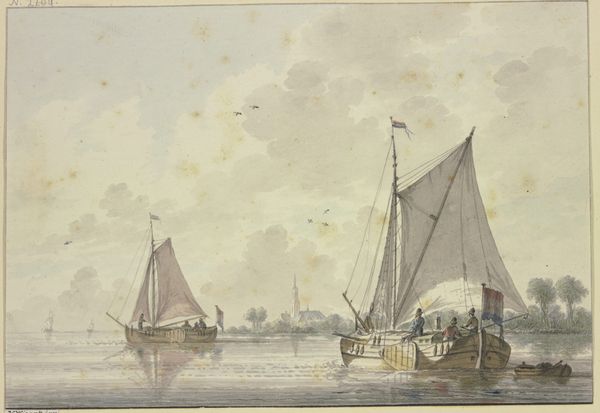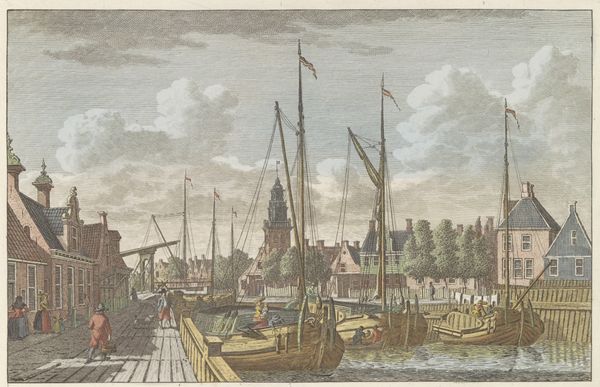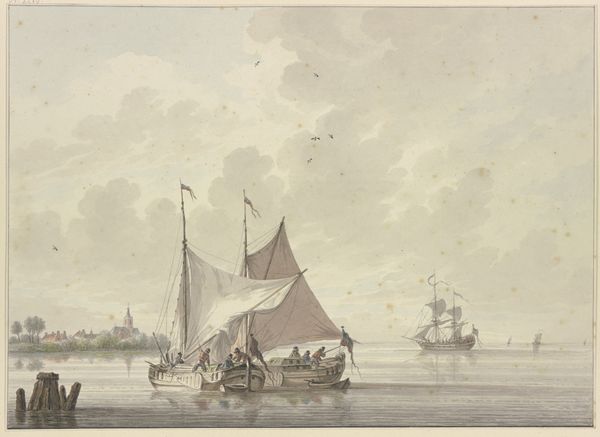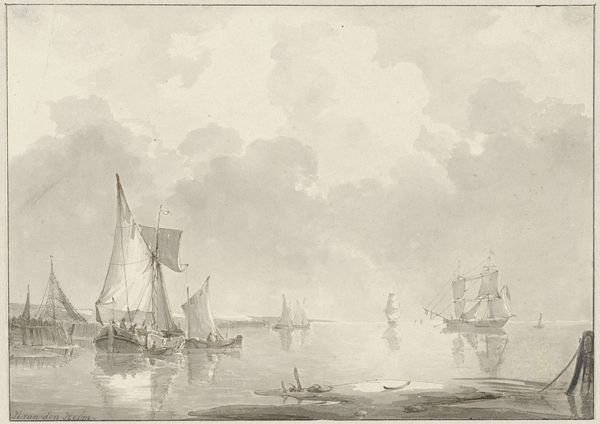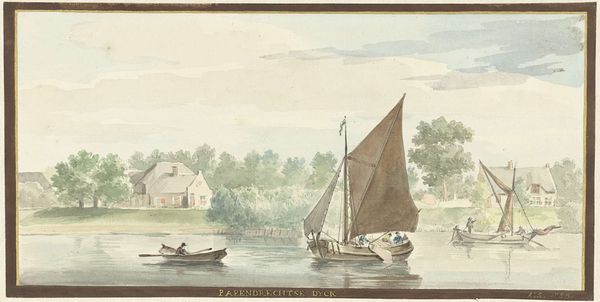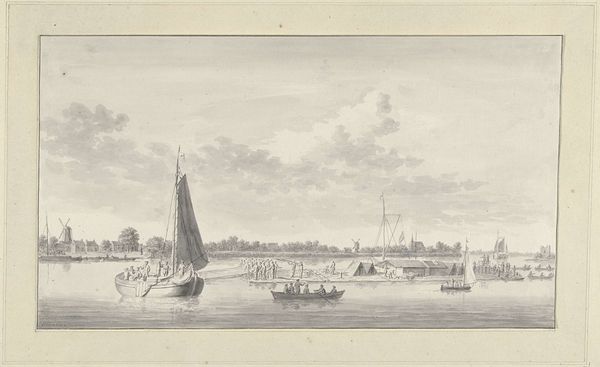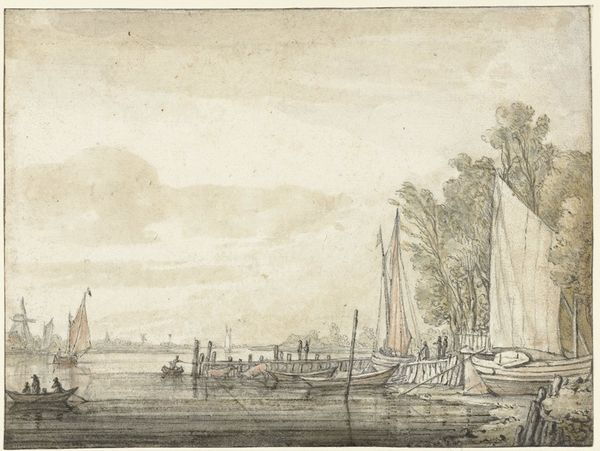
painting, watercolor
#
landscape illustration sketch
#
dutch-golden-age
#
painting
#
landscape
#
watercolor
#
watercolour illustration
#
genre-painting
Dimensions: height 275 mm, width 398 mm
Copyright: Rijks Museum: Open Domain
Editor: This watercolor, "Zeilschepen, aan de kant staan vijf mannen," attributed to Jan Arends and created sometime between 1748 and 1805, depicts sailing ships. The colors are muted and it feels almost like a snapshot in time. What catches your eye when you look at this piece? Curator: Immediately, I'm drawn to the intersection of maritime technology and social activity. This isn’t simply a representation of boats, but rather a depiction of a bustling economic scene. Note the figures on the shore – likely merchants, laborers, or ship owners – observing their vessels. This highlights the labor that built and sailed those ships, a human element often glossed over. Editor: So, you see the image as being less about the ships themselves and more about what they represent in terms of labor and social standing? Curator: Precisely. Think about the source of the materials for these ships, where was the wood sourced, the sails woven? This piece inadvertently highlights the vast network of production and consumption inherent in maritime trade of the Dutch Golden Age, a period often romanticized, ignoring the extraction and inequalities it created. Even the watercolor itself - think of the trade in pigments that allowed for such art creation. Editor: It’s interesting to consider that beyond the artistry there's a whole socioeconomic infrastructure being implied. I hadn’t thought of it that way. Curator: Ask yourself what kind of lives did the men live who built these ships, where they fairly compensated for their work and where were they buying food to feed their families? That should influence how you respond to seeing an image of these vessels, understanding they were very expensive at the time. Editor: Seeing it this way makes me question the kind of narrative these idyllic scenes often project and think critically about what’s not immediately visible. Thank you. Curator: The image serves as a launch point for exploring questions about resource extraction, economic structures, and the labor practices prevalent during the painting's era. It prompts us to consider art history within a context of material reality.
Comments
No comments
Be the first to comment and join the conversation on the ultimate creative platform.
